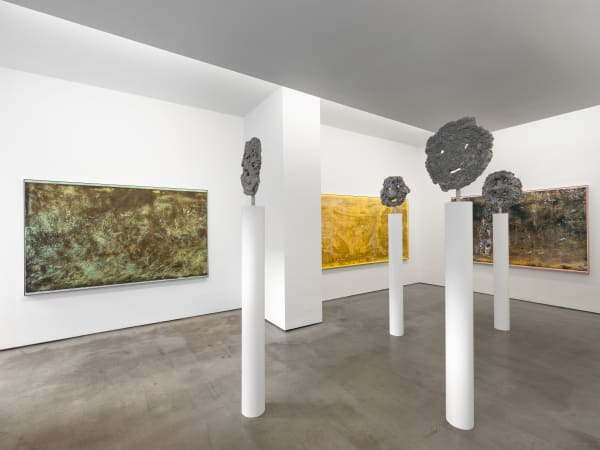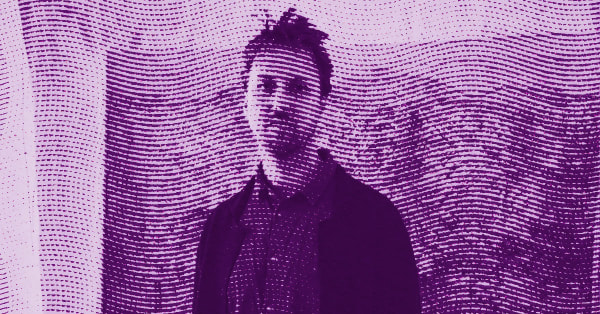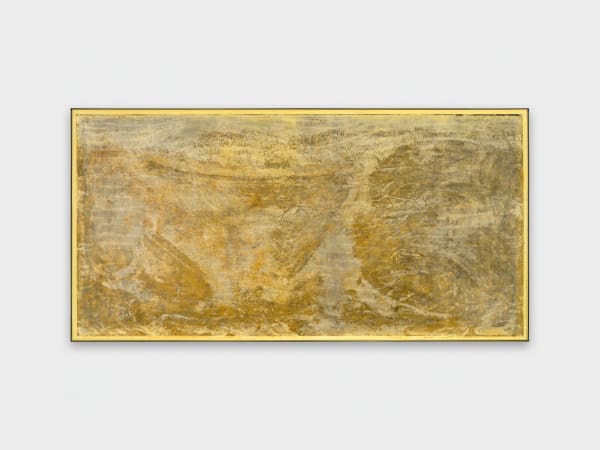Theodore Ereira-Guyer: The Possibility of Meeting Again
Theodore Ereira-Guyer
The Possibility of Meeting Again
October 30, 2025 – January 31, 2026
New York
Kutlesa is pleased to announce The Possibility of Meeting Again, a solo exhibition by Theodore Ereira-Guyer. This is the artist’s first solo presentation in New York and brings a deeply layered body of new, unique etchings and sculptures.
The exhibition evolved into an exploration of a world that existed before modernity fixed the parameters of experience—before the philosophical legacies of Socrates and Plato, before rational systems hardened knowledge into certainties. Instead, the artist imagines an earlier moment, fluid and unbounded, where navigation, meaning, and direction were found not in abstraction but in shadows, stars, and the natural rhythms of the globe.
'My etching practice is a painted ritual that searches out for the singular, that refuses reproducibility, forging a work that can never be repeated.'
Kutlesa is pleased to announce The Possibility of Meeting Again, a solo exhibition by Theodore Ereira-Guyer. This is the artist’s first solo presentation in New York and brings a deeply layered body of new, unique etchings and sculptures.
The exhibition evolved into an exploration of a world that existed before modernity fixed the parameters of experience—before the philosophical legacies of Socrates and Plato, before rational systems hardened knowledge into certainties. Instead, the artist imagines an earlier moment, fluid and unbounded, where navigation, meaning, and direction were found not in abstraction but in shadows, stars, and the natural rhythms of the globe.
The surrounding etchings represent the most ambitious work the artist has pursued in this medium to date. Evoking ancient stone façades and the broken shards of weather‑worn frescoes, each image erupts from a concealed past, materialising in the present moment. While a few compositions retain a faint horizon, the overall visual language dissolves the conventional divide between earth and sky, interior and exterior, forging a seamless, immersive field.
Alongside the monumental etchings, a quartet of sculptural objects anchors the show. Endless Night (North, South, East & West)—four aluminium masks—bridge sky and terrain in a single gesture. Their feather‑light presence stands in stark relief against the heft of traditional bronze, offering a momentary compass while gently destabilising the viewer’s sense of direction.
The fire basket rests on legs of oak galls—tiny, spherical growths that appear when gall‑wasps sting a tree. In medieval Europe these galls were harvested, ground and turned into the black ink that filled illuminated manuscripts, linking the work to centuries of recorded memory and the act of preserving narrative. Inside, bronze bowls made from sementes de lágrima (seeds of tears), a material the artist repeatedly employs to evoke loss, mourning and the lingering residue of emotion. By pairing the organic remnants of wounded trees with the enduring solidity of bronze, the piece summons the ancient hearth, the craft of basketry and the timeless ritual of containing fire—symbols of home, renewal and the fragile promise of continuity.
Through these works, Ereira-Guyer weaves an intricate network of references—Alberto Serra’s black‑and‑white film El Cant del Ocells (the Magi chasing an uncertain star), ancient Greek cliff‑shadow navigation, medieval ink‑making, and the ritual of the domestic fireplace. Together they frame a single, probing question: how do we find orientation when direction is fluid, certainties dissolve and the horizon itself disappears?
The Possibility of Meeting Again proposes no answers, but instead offers a space of suspended time—where memory, imagination, and materiality converge. The familiar becomes strange; the strange, intimate. What remains is a promise: that even in darkness, there are stars, firelight, and the possibility of beginning again.
Ereira-Guyer's work is held in private and public collections throughout the world including Centre Pompidou, France; Calouste Gulbenkian Museum Collection, Portugal; Millenium BCP Foundation, Portugal; MACAM | Museu de Arte Contemporânea Armando Martins, Portugal; Yale Center for British Art, US; TATE Special Collections, UK; TATE Archive, UK; British Museum, UK; Victoria and Albert Museum, UK; Royal College of Art Archive, UK; The Lookout Collection, UK; The Government Art Collection, UK; Fundação PLMJ, Portugal.
-

Theodore Ereira-Guyer on Artnet
Article by Yutong Yu (Art Critic & Writer) Nov 20, 2025Between such differences in cultural rhythms, Theodore insists on leaving ample alone time for himself, for his creation. He says that the everyday world often...Read more -

Theodore Ereira-Guyer on ArtCritic
The rusty artwork of Theodore Ereira-Guyer Nov 15, 2025Theodore Ereira-Guyer creates works that inhabit the interstices between painting, engraving, and sculpture. He etches steel plates with acid and then prints them into fresh...Read more











